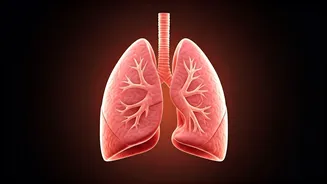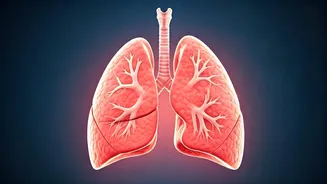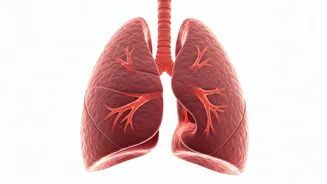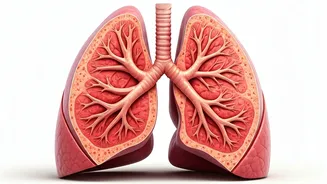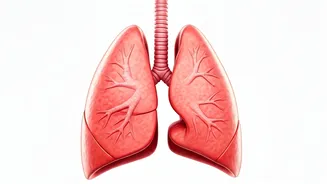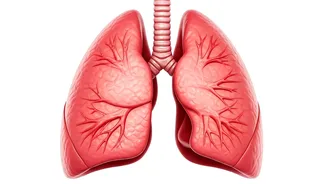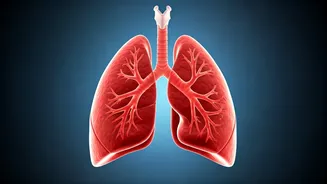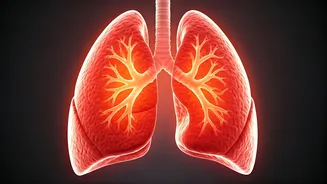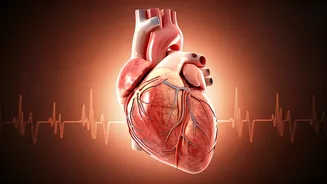Embrace the Breath
Diwali, a festival of lights, often brings with it a surge in air pollution. This can be challenging for respiratory health. Fortunately, yoga offers a natural
pathway to mitigate these effects. By practicing specific asanas, individuals can actively work to cleanse and strengthen their lungs, promoting better oxygen intake and overall well-being. It's crucial to acknowledge individual limitations and seek guidance from a healthcare professional before commencing any new exercise routine, especially if pre-existing health issues are present. These yoga poses should ideally be practiced in a ventilated indoor setting during Diwali to minimize exposure to harmful pollutants.
Bhramari: Humming Bee Breath
Bhramari, also known as the humming bee breath, is a technique focused on calming the mind and body. It's not a physical pose but a breathing exercise. To perform Bhramari, sit comfortably, close your eyes, and gently press your index fingers into your ears to block external sounds. Inhale deeply through your nose, and then exhale slowly while making a humming sound. This humming vibration helps to calm the nervous system and reduce stress, which indirectly supports respiratory health. It is particularly effective for soothing the mind and body amidst the environmental stresses of the Diwali season.
Bhujangasana: Cobra Pose
Bhujangasana, or the Cobra Pose, is a backbend that plays a pivotal role in opening the chest and increasing oxygen intake. To do this, lie flat on your stomach, with legs extended and the tops of your feet resting on the floor. Place your hands beneath your shoulders, elbows close to your body. Inhale slowly and lift your chest off the floor by straightening your arms and arching your back, gazing upwards. Hold the pose for a few breaths, ensuring a comfortable stretch, and then gently lower yourself back down. This pose stimulates the lungs and improves their capacity, making it a valuable practice during periods of heightened pollution, like Diwali.
Anulom Vilom: Alternate Nostril
Anulom Vilom, also called alternate nostril breathing, is a pranayama technique known for its detoxifying effects. To practice this, sit comfortably with your spine straight. Use your right thumb to close your right nostril and inhale deeply through your left nostril. Then, close your left nostril with your ring finger and release your thumb, exhaling through your right nostril. Inhale through your right nostril, close it with your thumb, and exhale through your left nostril. Repeat this cycle for several rounds. This practice balances the nervous system and improves oxygen flow, further enhancing respiratory function and minimizing the effects of air pollution. It’s an essential practice to improve the overall health during Diwali.
Kapal Bhati: Skull Shining
Kapal Bhati is a powerful breathing exercise known for cleansing the respiratory system. It involves active exhalations and passive inhalations. Sit comfortably with your spine erect. Inhale deeply, then exhale forcefully through your nose, contracting your abdominal muscles. The inhalation should happen naturally. Continue this rapid breathing for several rounds. This technique helps to clear the airways and stimulate the lungs, making it an excellent practice to counteract the effects of pollutants during Diwali. Ensure you proceed with caution and only if you are comfortable, if you have any respiratory issues. Always consult with a healthcare professional before starting.
Ustrasana: Camel Pose
Ustrasana, the Camel Pose, is a back-bending asana that expands the chest and stimulates the lungs. To perform this, kneel on the floor with your knees hip-width apart. Place your hands on your lower back for support, then slowly arch backward, reaching for your heels (if possible). Gently stretch your chest upwards, opening your lungs. Hold the pose for a few breaths, breathing deeply, and then return to the starting position. This pose opens the chest, strengthens the respiratory muscles, and promotes deeper breathing, making it a supportive practice during times of poor air quality. As with other poses, be mindful of your body’s limits and listen to any signals to stop.
